By now, the face-melting lies behind the Pfizer, Moderna and AstraZeneca COVID “vaccines” have been thoroughly picked apart and exposed by the most respected voices in alternative media.
However, many of these same truth-tellers give Sputnik V a free pass—or even vocally defend Russia’s shot. With a few notable exceptions, we do not attribute this phenomenon to malice. For whatever reason, the same scrutiny applied to the Big Pharma shots was never directed at Sputnik V, and as a result, hollow marketing slogans and fact-deficient boasts are masquerading as unassailable truths.
We have a simple thesis: If you are suspicious of the Big Pharma “vaccines,” you should be equally skeptical of Russia’s much-touted experimental injection. The below (incomplete) list of red flags explains why.
Sputnik V is a genetic vaccine. Its own developer says it is nearly identical to AstraZeneca’s (highly suspect) shot
According to its official website, Sputnik V—created by the Russian health ministry’s Gamaleya Center—is an adenoviral-based vaccine that uses two different types of adenovirus vectors (Ad26 and Ad5) to transport “genetic material” to cells.
A patent application from 2012 for Gamaleya’s influenza shot describes the drug as a “genetic vaccine.” The vaccine uses the same Ad5 adenovirus vector contained in Sputnik V’s second shot.
The patent for this “genetic vaccine” is listed on Sputnik V’s official website as evidence of the drug’s purportedly time-tested reliability. However, the influenza shot—GamFluVac—was never introduced into the international market and, according to reports, has not even been registered in Russia.
However, there are drugs on the market comparable to Sputnik V.
There are no “significant” differences between Sputnik V and AstraZeneca’s adenovirus-based vaccine, according to Gamaleya’s director, Alexander Gintsburg.
The close similarities between the two vaccines has fostered cooperation and comradery. In December 2020, the Russian Direct Investment Fund (RDIF)—the government fund that finances Sputnik V—signed a “memorandum of cooperation” with the UK-Swedish pharmaceutical giant.
The partners agreed to begin joint trials using a combination of their two drugs, in hopes of developing a Sputnik/AstraZeneca cocktail that could be registered in Russia.
Gintsburg said the joint tests would not take long because “the two technologies that underpin AstraZeneca’s vaccine and Sputnik V are very similar.”
Russian President Vladimir Putin hailed the partnership as a “good, convincing example of combining scientific forces, technologies, investments for a common goal” that would “protect the life, health and safety of millions of people on the planet as a whole.”
However, such cooperation aimed at achieving “a common goal” has not been limited to the Russian government pairing up with AstraZeneca.
Sputnik V’s developers openly and enthusiastically collaborate with Big Pharma
Kirill Dmitriev, head of the RDIF, announced in October that Sputnik V was conducting joint trials with Pfizer in two countries.
“We already have a joint study with Moderna in Argentina and Argentina is currently researching the Sputnik and Moderna combination. There are also two other countries that are currently researching the Pfizer and Sputnik combination and we believe this will be a very successful combination,” Dmitriev said.
A month later, Dmitry Shcheblyakov, a Gamaleya scientists who helped develop Sputnik V, said he supported the rollout of foreign vaccines in Russia.
“We see that the combined combination of different vaccines, made using different technologies, gives only an advantage,” Shcheblyakov argued.
These partnerships between the Russian government and Big Pharma are out in the open—and Dmitriev has never shied away from defending them.
For example, in August, Argentina began administering AstraZeneca and Moderna shots to people who had received the first Sputnik V dose. The Argentinian government said it was mixing the drugs due to supply shortages, but Dmitriev insisted this had been the plan all along.
“We suggested it, we always wanted to do a combo,” the RDIF CEO said at the time. “Sputnik is the first combined vaccine, the first mix and match, which consists of two different shots. We have said from the beginning that two different shots work better than two identical ones.”
Gamaleya’s vaccine platform is completely unproven
The vaccine’s proponents have claimed on numerous occasions that Gamaleya successfully developed an Ebola shot based on the same technology used to create Sputnik V. This is untrue.
Before launching Sputnik V into orbit, the institute repeatedly failed to send an approved drug beyond Russia’s own borders.
Years before its Ebola shot hit a dead-end, Gamaleya’s first attempt at a vector adenovirus vaccine resulted in a multimillion-dollar embezzlement scandal.
The institute’s business dealings came under scrutiny, again, in November after a Russian media report—based on open-source government documents—revealed Gamaleya was outsourcing the production of its own “brand” of Sputnik V, which it was supposed to be manufacturing itself. Gamaleya paid an unnamed third party, in both rubles and US dollars, for batches of its own drug that were later resold and distributed across Russia.
According to Russian media reports, the money being poured into Gamaleya has gone toward luxury vehicles for the bosses. Meanwhile, photographs of the institute’s purported “vaccine” building resemble something from an underfunded midwestern community college.
One report pointed to the “devastation [and] squalor” inside one of Gamaleya’s buildings. Another investigation detailed decades-old fire damage and other safety concerns which appear to plague Gamaleya’s facilities right up to the present day.
“Infinite” boosters will be needed to maintain Sputnik V’s “efficacy”
The Russian government continues to maintain Sputnik V is highly effective at preventing severe cases of coronavirus.
In April 2021, Gintsburg said he believed Sputnik V would provide indefinite immunity. A month later, Gamaleya’s director adjusted his forecast, explaining Sputnik V would remain effective for two years.
In June, Gintsburg announced Russians would need a Sputnik booster shot six months after vaccination. On December 19 he recommended getting revaccinated an “infinite” number of times every six months.
In October, Nakanune.ru published an analysis which showed “vaccination had yielded nothing” nine months after Russia launched its increasingly coercive inoculation drive.
According to virology professor Vitaly Zverev, the available data points to a close correlation between the increase in vaccination and the increase in morbidity and mortality from COVID in Russia.
Even without examining figures and datasets, one is compelled to ask: if Sputnik V offers a level of efficacy that you can’t get from other vaccines, why is the Russian government so eager to combine its own drug with Big Pharma shots—which have experienced tumbling efficacy and are plagued by serious safety concerns?
Even with zero transparency, there is growing evidence Sputnik V is not safe
According to Putin, “not a single serious case of complications” has been registered since the start of Russia’s nationwide vaccine rollout nearly a year ago.
This is technically true, but not because Sputnik V enjoys an unassailable safety record.
There’s no VAERS in Russia and the government continues to withhold statistics on post-vaccination complications.
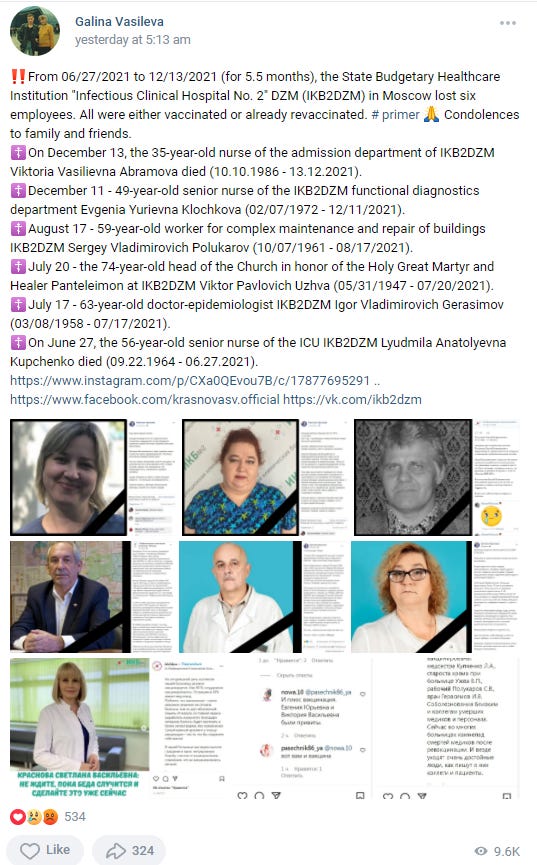
Due to the shocking lack of transparency, Russians have been forced to create Telegram groups and unofficial database where adverse effects—including suspected vaccine-related deaths—are documented. The Russian government has compared these concerned citizens to terrorists.
Meanwhile, doctors and activists calling for greater transparency have been labeled “enemies of the people” by RT.
Data from other nations using Sputnik V suggests that while the drug is not the most dangerous COVID shot on the market, it’s still far from harmless.
A recent article that reviewed the adverse event tracking systems from Argentina, Mexico, Paraguay and the Philippines concluded that, in terms of the frequency of mild and severe side effects, Sputnik V is comparable to foreign vaccines.
“The frequency of these adverse events varies between the four countries, but Sputnik V is generally in the middle of the comparative safety rating, with the exception of Argentina, where Sputnik V has the highest frequency of adverse events of all vaccines used in the country, including those in which the expected side effects occurred more frequently in the other three countries,” Krasnaya Vesna reported on December 18.

In October, Deputy Speaker of the State Duma Pyotr Tolstoy conceded the Russian government had completely failed to convince the public that Sputnik V was safe and effective.
“There are few answers to the questions why those who are vaccinated are ill, why those who are vaccinated die, why there are problems and complications after the vaccinations themselves,” the high-ranking lawmaker said.
Sputnik V has direct and obvious ties to the global Great Reset agenda
A compelling case can be made that the global vaccine rollout at least partly aims to usher in digital IDs that will become necessary for all aspects of normal life.
Russia’s State Duma is preparing to vote on legislation that would create a nationwide QR system that would be largely tied to vaccination status. Numerous polls show around 90% of Russians oppose this law. Putin has called for its immediate adoption.
And what is the science behind this policy? Gintsburg himself has conceded his own vaccine does not stop transmission and says those who have been fully vaccinated should wear masks to prevent infecting others. Amazingly, Gamaleya’s director still insists nationwide QR codes are needed to limit “interaction between the vaccinated and unvaccinated.”
Perhaps it is purely coincidental, but one of the main players behind Sputnik V, Sberbank CEO Herman Gref, has been developing biometric ID technology, QR code payment systems, a cryptocurrency, as well as a range of services that seem to fit seamlessly with the World Economic Forum’s playbook for the next ten years.
In fact, in September 2020, Russia’s largest lender announced it was no longer simply a bank, but instead a “universe of services.” There is now SberMarket. SberHealth. SberID. SberFood. SberSound. SberAI—among many others.
The coincidence becomes even more strange when one examines Kirill Dmitriev’s own ties to the World Economic Forum. Actually, most of the big names behind Sputnik V seem to be frequent guests at Davos and on very friendly terms with Klaus Schwab.
Surely, Sputnik V deserves a bit more scrutiny?
Riley Waggaman (aka “Edward Slavsquat”) is an American writer based in Moscow. He worked for nearly four years at RT (his official position was “senior editor”, but his day-to-day responsibilities were not as illustrious as the title suggests)




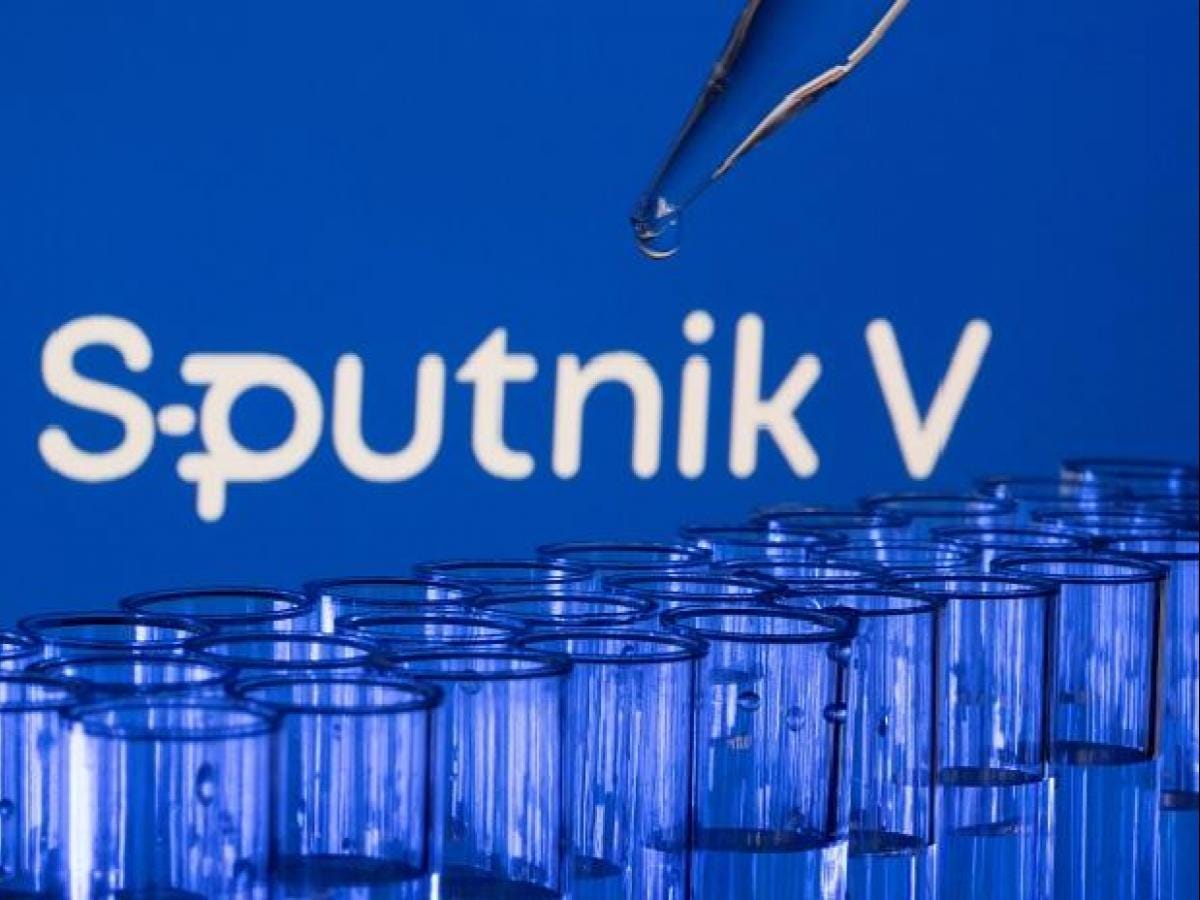
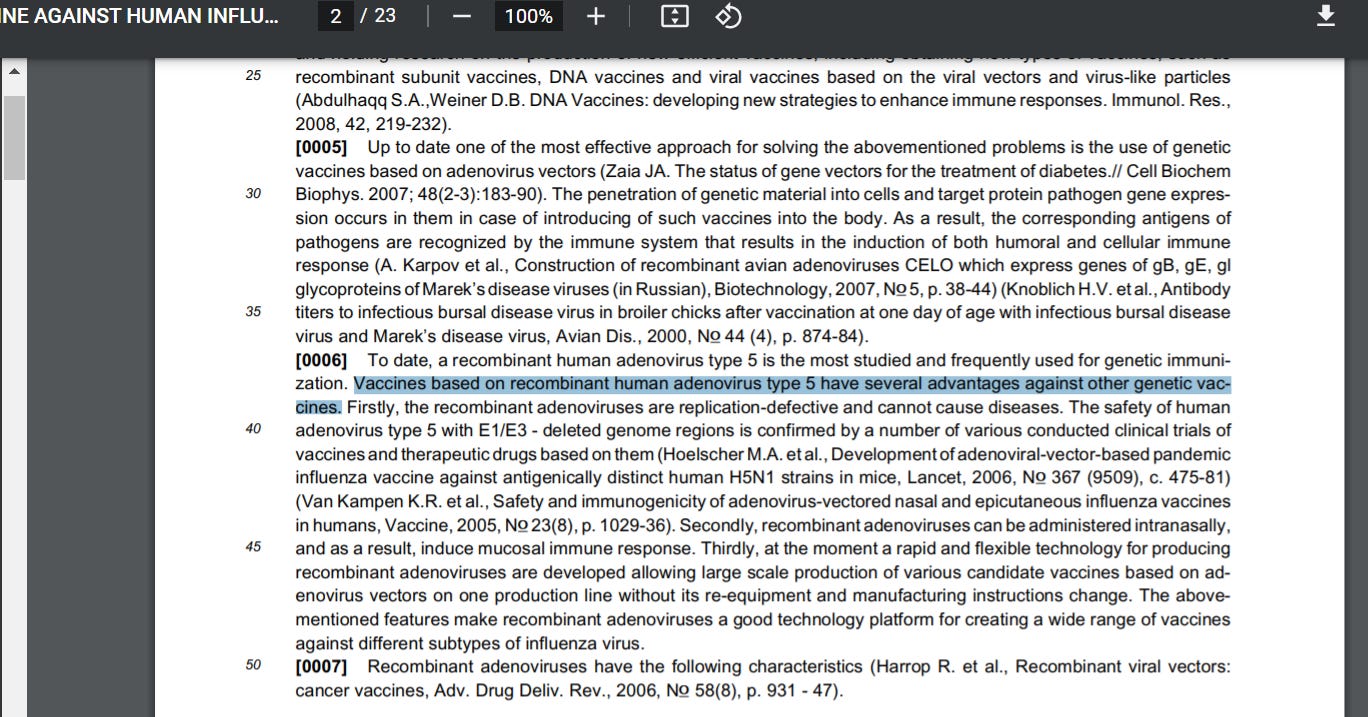
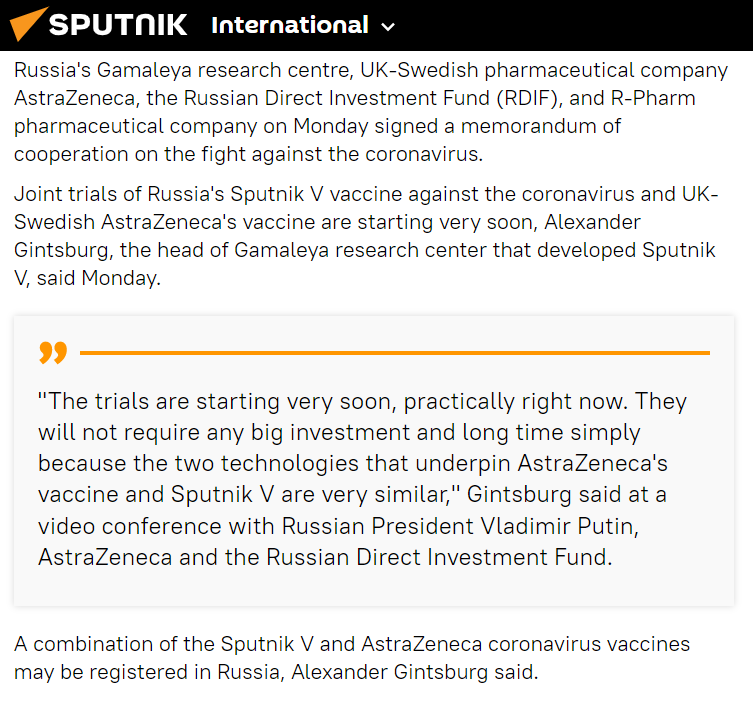
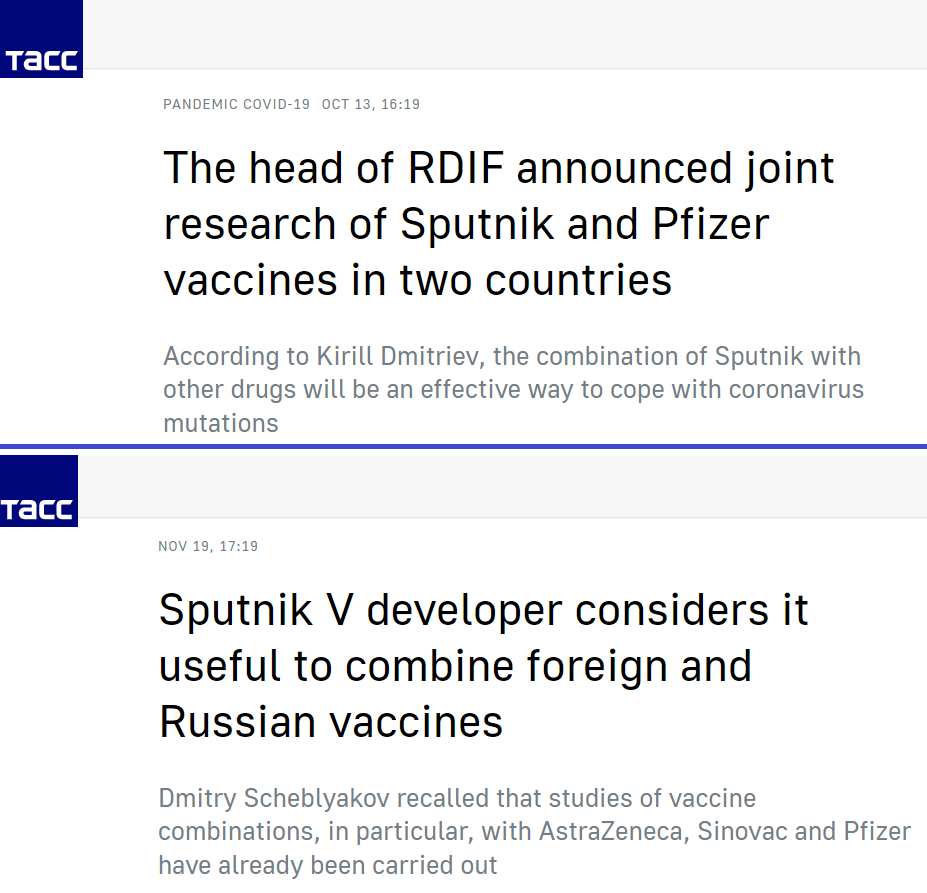

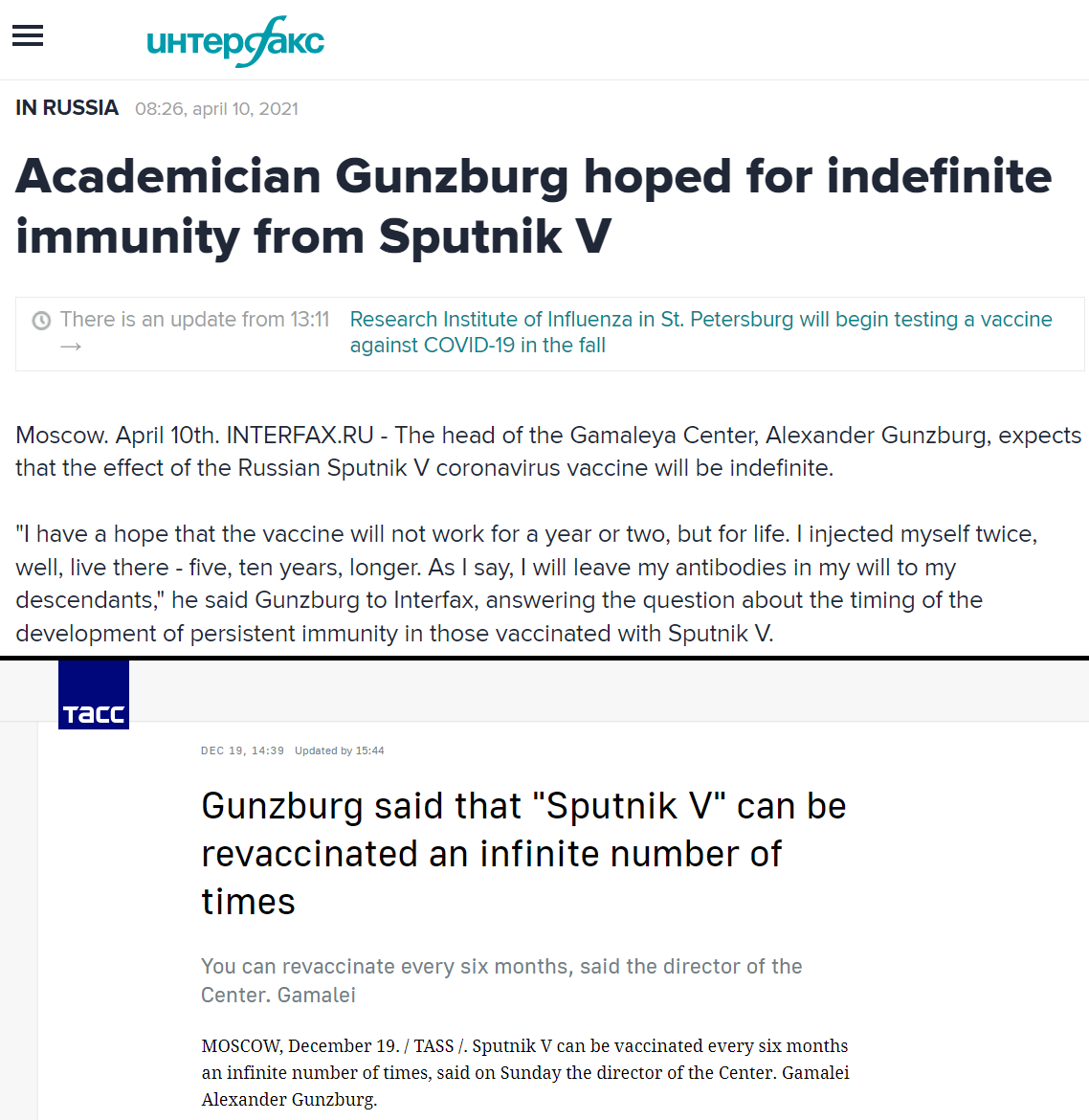


hello friends, I wrote this as a brief overview of the biggest red flags re: Sputnik V. please share if you find it useful. I hope everyone is enjoying the holiday season! :) time for some champagne...
It's like Pokemon to these morons at gamelaya, they think having all the vaccines give you more powers.... Gotta catch em all